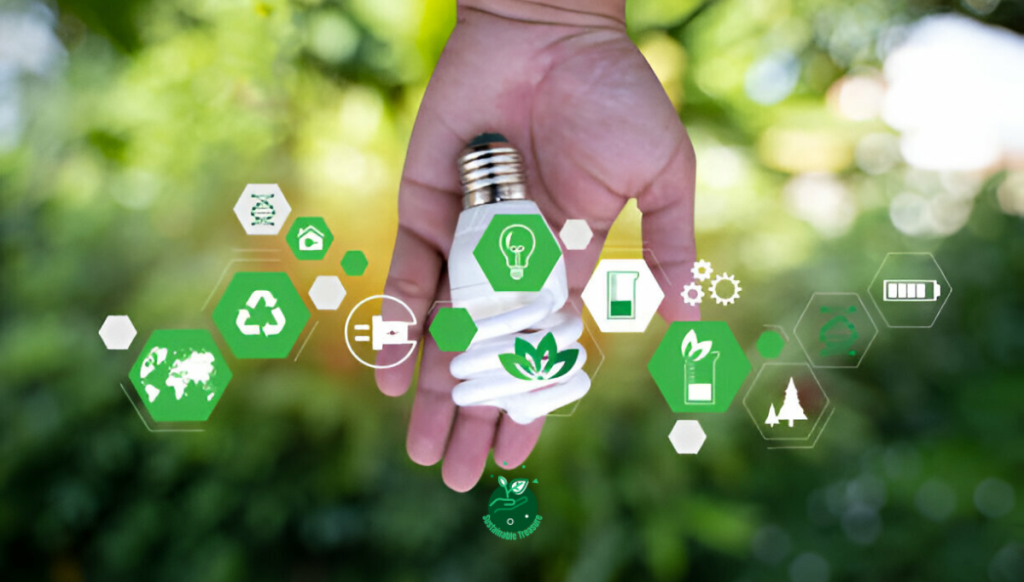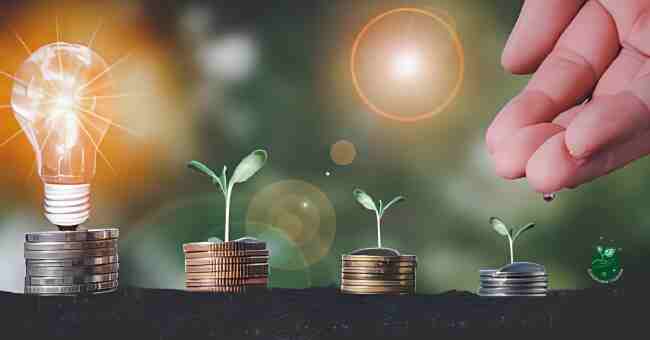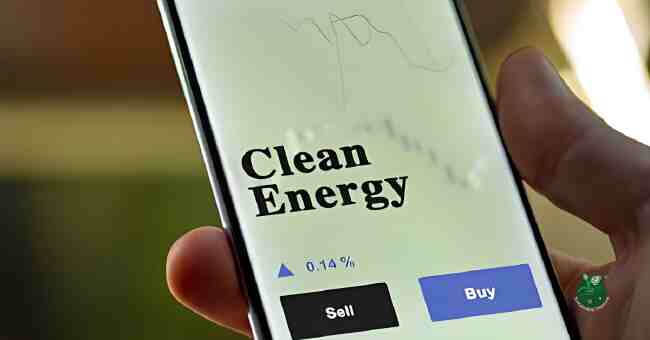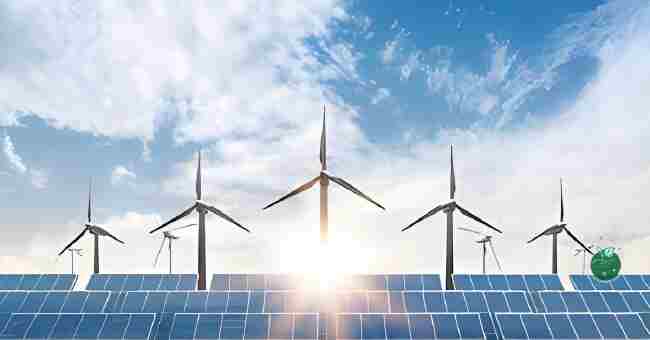Table of Contents
Why invest in clean Energy? Investing in clean energy is a wise choice for a sustainable future. Renewable sources like solar, wind, and hydroelectric power offer an eco-friendly solution to meet our energy demands while safeguarding the environment.
For working families, this transition is not merely an ethical decision but a prudent financial move with long-term benefits.
Growing up, I witnessed my parents struggle to make ends meet, with soaring energy bills draining our limited resources. Their unwavering determination to provide for our family left an indelible mark on me.
Today, clean energy presents an opportunity to alleviate this burden, ensuring a better tomorrow for hard-working households like ours.
In this article, I’ll delve into the compelling reasons why embracing clean energy is a pragmatic choice for working families, addressing both financial and environmental considerations.
Reason 1: Save Money on Energy Bills
One of the most significant advantages of clean energy is its potential to reduce your energy costs in the long run.
While the initial investment in solar panels or wind turbines may seem substantial, the savings on your electricity bills over time can be substantial.
Here’s an example:
| Energy Source | Initial Cost | Monthly Cost (25 years) | Total Cost (25 years) |
|---|---|---|---|
| Traditional Electricity | $0 | $150 | $45,000 |
| Solar Panels | $15,000 | $50 | $16,250 |
As you can see, despite the higher upfront cost, solar panels can save you a significant amount of money over their lifespan.
Additionally, many states and the federal government offer tax credits and incentives for installing renewable energy systems, further reducing the overall cost.
Reason 2: Increase Your Home’s Value
Homes equipped with clean energy systems, such as solar panels or small wind turbines, are becoming increasingly attractive to potential buyers.
According to a study by the Lawrence Berkeley National Laboratory, homes with solar panels sell for a premium of around 4.1% compared to similar homes without solar installations.
This increased value can be a significant advantage when it comes time to sell your home, as more and more buyers are seeking energy-efficient and sustainable properties.
Reason 3: Contribute to a Cleaner Environment
Perhaps the most compelling reason to invest in clean energy is its positive impact on the environment. Traditional energy sources like coal, oil, and natural gas release harmful greenhouse gases, contributing to climate change and air pollution.
On the other hand, clean energy sources like solar, wind, and hydroelectric power produce little to no emissions, making them a much more environmentally friendly option.
By transitioning to renewable energy, you can reduce your carbon footprint and play a part in creating a cleaner, healthier planet for future generations.
Reason 4: Support Local Jobs and Economic Growth
The clean energy industry is a rapidly growing sector, creating numerous job opportunities in various fields, including manufacturing, installation, and maintenance.
By investing in clean energy, you’re supporting local businesses and contributing to the economic growth of your community.
According to the International Renewable Energy Agency (IRENA), the renewable energy sector employed over 12 million people worldwide in 2020, with projections of continued growth in the coming years.
Reason 5: Achieve Energy Independence
Relying on traditional fossil fuels often means relying on imports from other countries, which can be subject to price fluctuations and political instability.
By investing in clean energy sources like solar and wind, you can achieve greater energy independence and reduce your reliance on external sources.
This not only provides a sense of security but also contributes to the overall energy independence of your community and country.
Case Studies: Families Who Have Embraced Clean Energy
To better understand the benefits of clean energy, let’s explore some real-life examples of working families who have made the transition:
The Johnson Family: Solar Power Success Story
The Johnson family, living in California, decided to install solar panels on their roof in 2018. After taking advantage of state and federal incentives, their initial investment was around $12,000.
However, within just five years, they had already recouped their investment through lower electricity bills.
“The decision to go solar was one of the best choices we ever made,” says Sarah Johnson. “Not only are we saving money, but we also feel good knowing that we’re doing our part for the environment.”
The Martinez Family: Wind Power Pioneers
In rural Texas, the Martinez family installed a small wind turbine on their property in 2016. With the help of a local installer and some DIY efforts, they were able to set up the system for around $8,000.
“Living in a remote area, we used to rely heavily on generators and fossil fuels for our energy needs,” explains Jose Martinez. “With our wind turbine, we’ve not only reduced our energy costs but also become more self-sufficient.”
These examples demonstrate that investing in clean energy is not only feasible but also highly rewarding for working families from various backgrounds and locations.
Getting Started: Steps to Transition to Clean Energy
If you’re convinced about the benefits of clean energy, here are some steps to help you get started:
- Assess your energy needs: Determine your household’s energy consumption by reviewing your utility bills and considering your future energy requirements.
- Research clean energy options: Explore the various clean energy solutions available in your area, such as solar panels, wind turbines, or geothermal systems. Consider their costs, incentives, and potential savings.
- Find a reputable installer: Look for experienced and certified professionals who can guide you through the installation process and ensure compliance with local regulations.
- Explore financing options: In addition to upfront costs, investigate financing options like loans, leases, or power purchase agreements to make clean energy more accessible.
- Take advantage of incentives: Research and apply for available tax credits, rebates, and other incentives offered by your state, local government, or utility company.
- Monitor and maintain your system: Once installed, regularly monitor and maintain your clean energy system to ensure optimal performance and longevity.
By following these steps, you can seamlessly transition to clean energy and start enjoying the numerous benefits it offers.
FAQs

Why Should I Invest In Clean Energy?
The benefits of investing in clean energy are numerous. Firstly, it’s an investment in a sustainable future for our planet.
By transitioning to renewable sources like solar, wind, and hydroelectric power, we can significantly reduce our carbon footprint and mitigate the effects of climate change.
Additionally, clean energy can lead to substantial long-term cost savings on your energy bills. While the initial investment may be higher, the operational costs of renewable energy systems are typically lower than traditional fossil fuels.
As technology continues to advance, the cost of clean energy is expected to become even more affordable.
What Are The Different Types Of Clean Energy?
The most common types of clean energy include solar power, wind power, hydroelectric power, geothermal energy, and bioenergy. Solar panels harness energy from the sun, while wind turbines convert the kinetic energy of wind into electricity.
Hydroelectric power utilizes the force of flowing water to generate electricity, and geothermal energy taps into the heat from the Earth’s interior.
Bioenergy, on the other hand, involves the use of organic matter, such as plant materials, animal waste, and municipal solid waste, to produce energy.
Each of these clean energy sources has its own advantages and suitability depending on factors like location, climate, and resource availability.
Is Clean Energy Expensive?
While the initial investment in clean energy systems can be substantial, the long-term cost savings often outweigh the upfront expenses.
Additionally, various government incentives, tax credits, and rebates are available to help offset the costs of installing renewable energy systems.
It’s important to consider the lifetime costs of clean energy solutions. Solar panels, for instance, have minimal operational costs once installed, and the energy they generate is essentially free after the initial investment is recovered. Over time, the savings on energy bills can significantly offset the initial cost of installation.
How Reliable Is Clean Energy?
Clean energy sources like solar and wind power are becoming increasingly reliable as technology advances. Modern solar panels and wind turbines are designed to withstand various weather conditions and have long operational lifespans, often lasting 20 years or more with proper maintenance.
Additionally, the integration of energy storage solutions, such as batteries, can help mitigate the intermittency of some renewable sources, ensuring a consistent supply of energy even when the sun isn’t shining or the wind isn’t blowing.
What Are The Environmental Benefits Of Clean Energy?
One of the most significant benefits of clean energy is its positive impact on the environment. Unlike fossil fuels, which release harmful greenhouse gases and contribute to air pollution, clean energy sources like solar, wind, and hydroelectric power produce little to no emissions during operation.
By transitioning to clean energy, we can significantly reduce our carbon footprint and help mitigate the effects of climate change, such as rising temperatures, sea level rise, and extreme weather events.
Additionally, clean energy helps preserve natural resources and promotes a healthier, more sustainable planet for future generations.
How Can I Finance Clean Energy Installations?
There are various financing options available for clean energy installations, making them more accessible to homeowners and businesses. Some common options include:
- Solar loans: These are specialized loans specifically designed to finance solar panel installations, often with attractive interest rates and repayment terms.
- Leasing programs: Some companies offer leasing programs where you can rent solar panels or other clean energy systems, allowing you to benefit from the energy savings without the upfront costs.
- Power purchase agreements (PPAs): With a PPA, a third-party company installs and owns the clean energy system on your property, and you agree to purchase the energy it generates at a fixed rate, typically lower than your utility rates.
- Government incentives: Many states and the federal government offer tax credits, rebates, and other incentives to encourage the adoption of clean energy.
How Do I Choose A Clean Energy Provider?
When choosing a clean energy provider, it’s essential to do your research and consider factors like experience, reputation, pricing, and customer service.
Look for providers that specialize in the type of clean energy system you’re interested in and have a proven track record of successful installations.
Additionally, read customer reviews and ask for references to gauge the provider’s reliability and quality of work. It’s also essential to ensure that the provider is licensed, insured, and adheres to all relevant codes and regulations in your area.
How Long Does It Take To Recoup The Investment In Clean Energy?
The time it takes to recoup the investment in clean energy systems varies depending on factors like the type of system, your energy consumption, and the available incentives and rebates.
On average, homeowners can expect to recover their initial investment in solar panels within 7 to 15 years through energy bill savings.
However, it’s important to note that the payback period can be shorter or longer depending on your specific circumstances.
Consulting with a clean energy provider and conducting a thorough cost-benefit analysis can help you estimate the expected return on investment for your particular situation.
Conclusion
Investing in clean energy is not just a trend; it’s a necessity for a sustainable future. By embracing renewable sources like solar, wind, and hydroelectric power, working families can save money on energy bills, increase their home’s value, contribute to a cleaner environment, support local jobs, and achieve energy independence.
The time to act is now. Join the growing movement of families who are making a positive impact on the planet while securing a brighter future for themselves and generations to come.
Image: Credit Just Stock



